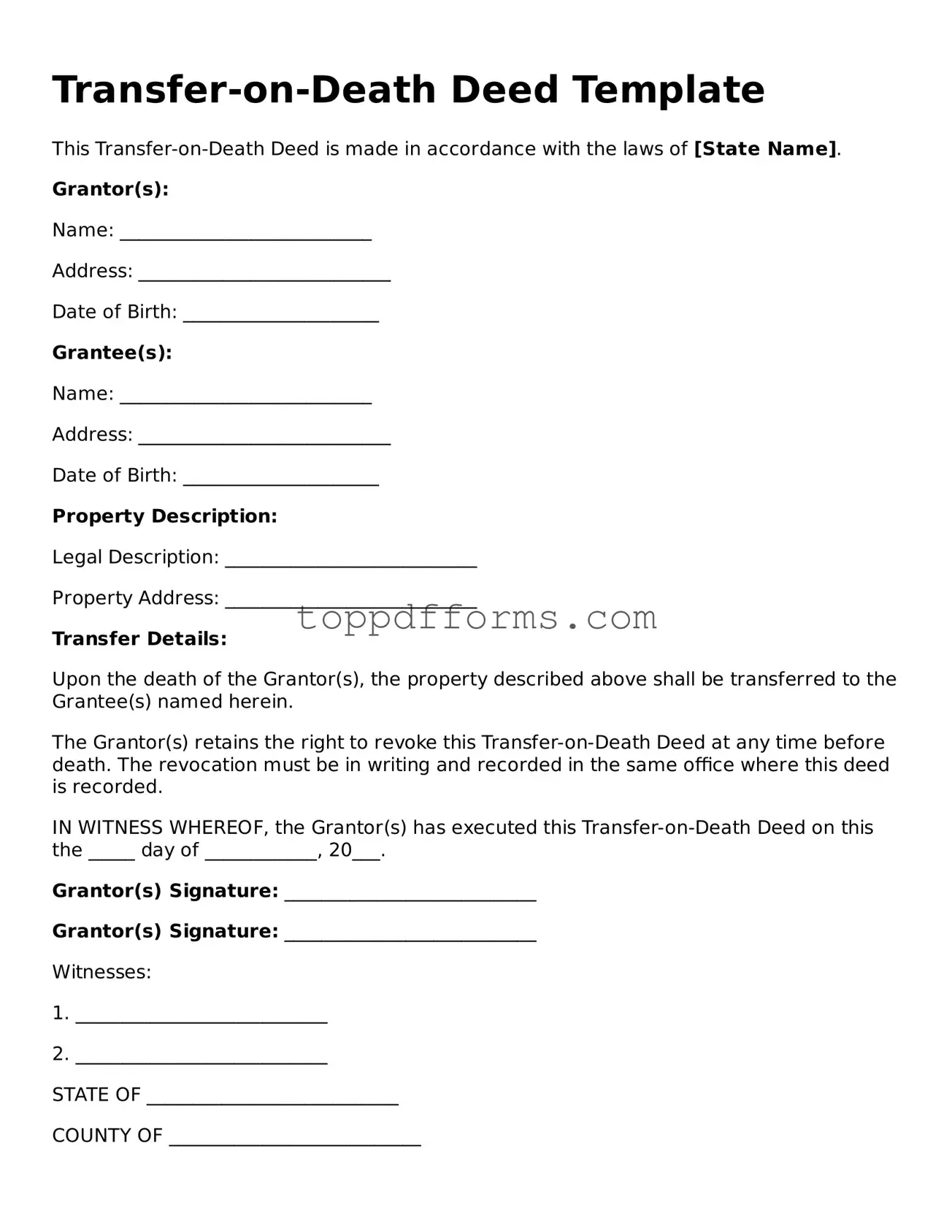What is a Transfer-on-Death Deed?
A Transfer-on-Death Deed (TOD Deed) is a legal document that allows an individual to transfer ownership of real estate to a beneficiary upon the individual's death. This type of deed can simplify the transfer process, avoiding probate and ensuring that the property passes directly to the designated beneficiary without court involvement.
Who can use a Transfer-on-Death Deed?
Any property owner can use a Transfer-on-Death Deed, provided they are of legal age and mentally competent. It is important to check state-specific laws, as some states may have restrictions or specific requirements regarding the use of TOD Deeds.
How does a Transfer-on-Death Deed work?
When the property owner completes and records the Transfer-on-Death Deed, the designated beneficiary will not have any rights to the property until the owner's death. After the owner's passing, the property automatically transfers to the beneficiary without going through probate, provided the deed was properly executed and recorded.
Are there any tax implications associated with a Transfer-on-Death Deed?
Generally, a Transfer-on-Death Deed does not trigger immediate tax consequences for the property owner. However, beneficiaries may be subject to property taxes and potential capital gains taxes when they sell the property. It is advisable to consult a tax professional for personalized advice regarding specific situations.
Can a Transfer-on-Death Deed be revoked?
Yes, a Transfer-on-Death Deed can be revoked at any time before the property owner's death. The owner can do this by executing a new deed that explicitly revokes the previous one or by recording a formal revocation document. It is essential to follow the legal requirements in your state to ensure the revocation is valid.
What happens if the beneficiary predeceases the property owner?
If the beneficiary named in the Transfer-on-Death Deed passes away before the property owner, the deed may become void unless the owner has named alternate beneficiaries. It is crucial to consider this possibility and include contingent beneficiaries to ensure a smooth transfer of ownership.
Is a Transfer-on-Death Deed the same as a will?
No, a Transfer-on-Death Deed is not the same as a will. While both documents serve to transfer property, a will typically requires probate, while a TOD Deed allows for direct transfer without court involvement. Additionally, a will can cover various assets, while a TOD Deed specifically pertains to real estate.
What are the benefits of using a Transfer-on-Death Deed?
One of the primary benefits of a Transfer-on-Death Deed is the avoidance of probate, which can be a lengthy and costly process. This deed also provides peace of mind, as property owners can designate beneficiaries while retaining control of the property during their lifetime. Furthermore, it can simplify the transfer process for loved ones during a difficult time.
How can I create a Transfer-on-Death Deed?
To create a Transfer-on-Death Deed, you will need to obtain the appropriate form for your state, fill it out accurately, and sign it in front of a notary public. Afterward, the deed must be recorded with the local county recorder's office. It is advisable to consult with a legal professional to ensure compliance with state laws and to address any specific concerns.
